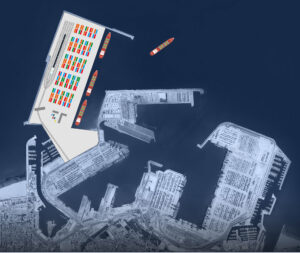
- The contracting table of the Port Authority of Valencia (PAV) will meet again next Thursday, once the technical staff analyzes the documents related to the personal and material resources presented
- Acciona, Dragados, FCC and Sacyr lead the 4 TJV, all of them with valencian presence
València, April 9, 2024.- The four Temporary Joint Ventures (TJV) that have submitted their bids for the tender for the execution of the works for the container terminal in the northern expansion of the Port of Valencia, include valencian companies among their members.
These TJV are:
- Acciona Construcción, SA – Jan de Nul nv – Grupo Bertolin, SAU
- Dragados, SA – Rover Maritime, SL – Torrescamara y Cia de Obras, SA – Dredging International España, SA – Dravo, SA
- FCC Construcción – Pavasal – Boscalis
- Sacyr Construcción, SA – Sociedad Anónima Trabajos y Obras – Becsa, SA – Agrupacion Quinovart Obras y Servicios Hispania, SA.
The contracting table of the Port Authority of Valencia (PAV), which assists the Board of Directors, has agreed to suspend today’s session and to resume it next Thursday due to the need to give the technical staff the necessary documents related to the personal and material means required in the specifications of the award procedure, in order to confirm the sufficiency of these in the tender documents, about the documents related to the personal and material means required in the specifications of the awarding procedure, in the purpose of confirm the sufficiency of these, in the offers presented by the concurrent companies.
Accordingly, it has been agreed to suspend the session of the contracting table, held this morning at 9:00 am, and it is planned to resume it next Thursday, April 11 at 1:00 pm.
Characteristics of the new terminal
The new container terminal of the Port of València will be an infrastructure that will combine technology, eco-efficiency, intermodality and sustainability that will enable it to offer an optimum service to the Spanish economy and maintain the inter-oceanic character that guarantees connectivity with the markets of the five continents. Furthermore, it will be an infrastructure that will generate employment and boost the economic activity of its hinterland and will reinforce the status of the Spanish ports as a European benchmark in the Mediterranean arc. This infrastructure, which will be located in the sheltered waters of the northern extension whose works were completed in 2012, will have a surface area of some 137 hectares and 1,970 metres of berthing line, with a capacity to hold five million containers. The terminal will have state-of-the-art design, technology and equipment, with a fully electrified facility, enabling it to handle the large container ships in service, with high performance in both maritime and land operations.

